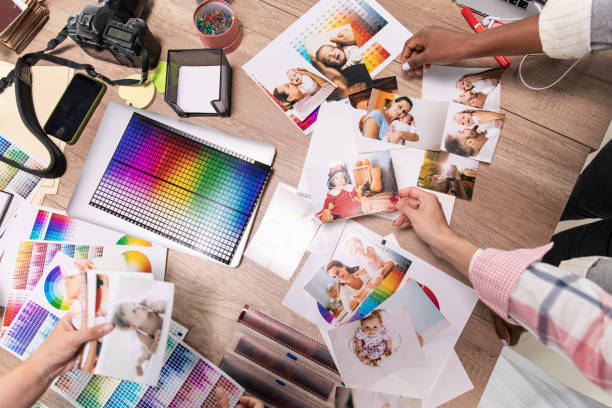Introduction to Color Theory
Color is more than just a visual element; it’s a powerful tool that can influence emotions, drive decisions, and elevate your designs to new heights. At pushyourdesign com we believe understanding color theory is essential for anyone looking to make an impact in the world of design. Whether you’re designing a website, branding materials, or any other digital content, mastering the art and science of color can set you apart from the competition.
Imagine having the ability to evoke feelings simply through your choices in hues—getting it right can mean the difference between captivating your audience and losing their interest. This blog post will delve into how you can harness color theory to enhance your projects on pushyourdesign com. From understanding primary colors to exploring intricate combinations that create harmony and balance, we’ll guide you every step of the way. Get ready to transform your designs with vibrant insights!
The Basics of Color: Primary, Secondary, and Tertiary Colors
Colors are the foundation of design. Understanding their categories is essential for any creative process.
Primary colors—red, blue, and yellow—serve as the building blocks. They cannot be created by mixing other colors but can create a wide range when combined.
Mix two primary colors to produce secondary colors: green, orange, and purple. These shades add depth and complexity to your palette.
Next come tertiary colors, formed by mixing a primary color with a secondary one. Think of shades like red-orange or yellow-green; they enhance visual interest in designs.
Identifying these categories helps streamline your choices in web design on pushyourdesign com. With this knowledge, you can create harmonious palettes that resonate with viewers effectively.
Using Color Combinations for Maximum Impact
Color combinations can transform a design from mundane to mesmerizing. The right pairings create harmony and evoke emotions, guiding the viewer’s journey through your visuals.
Consider complementary colors, which sit opposite each other on the color wheel. They create striking contrasts that grab attention instantly. For example, pairing blue with orange not only energizes but also highlights key elements in your design.
Analogous colors offer a softer approach. These are next to each other on the wheel, like green, yellow-green, and yellow. This combination fosters unity while maintaining visual interest—ideal for backgrounds or branding.
Don’t shy away from experimenting with triadic schemes as well. Using three evenly spaced colors creates vibrant yet balanced designs that pop without overwhelming the viewer’s senses.
The key is to test different combinations and observe their effects on your audience’s perception of your message on pushyourdesign com. Color is more than decoration; it’s an essential part of effective communication.
Incorporating Color Theory in Web Design on pushyourdesign com
Color theory is a powerful tool when it comes to web design on pushyourdesign com. By understanding how colors interact, designers can craft visually appealing layouts that attract and engage users.
Start by choosing a color palette that resonates with your brand identity. A well-chosen palette enhances recognition and fosters trust among visitors.
Consider the emotional impact of colors. Warm tones evoke excitement, while cool shades promote calmness. This knowledge helps create the desired user experience.
Incorporate contrasting colors for buttons and calls to action. This strategy ensures key elements stand out against the background, guiding users seamlessly through your site.
Use color hierarchy to emphasize important information or sections. Different hues can help prioritize content effectively without overwhelming viewers with too much detail at once.
Examples of Successful Use of Color Theory on pushyourdesign com
On pushyourdesign com, color theory is expertly utilized to create visually striking designs. One standout example features a vibrant blue and orange palette, which evokes energy while maintaining harmony. The contrast draws the eye without overwhelming the viewer.
Another effective use of color comes from incorporating earthy tones in nature-themed projects. This choice not only enhances aesthetics but also connects users emotionally with the content.
The site’s minimalist design elements often leverage monochromatic schemes, allowing subtle variations in shades to emphasize key information. This approach keeps user focus sharp and enhances readability.
Additionally, seasonal updates explore thematic colors that reflect current trends or holidays. These timely changes engage visitors while showcasing versatility in design strategy.
Each application of color on pushyourdesign com demonstrates how thoughtful choices can elevate user experience and convey messages more effectively.
Tips for Implementing Color Theory in Your Own Designs
Start with a color wheel. Understanding the relationships between colors is essential for effective design. Use this tool to find combinations that resonate.
Limit your palette. Choose three main colors: one dominant, one secondary, and an accent color. This strategy creates harmony without overwhelming viewers.
Experiment with shades and tints. Adjusting the brightness or darkness of your chosen colors can add depth while maintaining cohesion in your designs.
Consider accessibility. Ensure your color choices are legible for everyone, including those with visual impairments. Tools like contrast checkers can assist here.
Stay true to brand identity. Align your color scheme with the emotions and values you want to convey through pushyourdesign com’s content.
Test different combinations on mockups before finalizing them. This allows you to see how they work in practice, ensuring an impactful user experience across various platforms.
Understanding the Basics of Color Theory
Color theory forms the backbone of design. It explains how colors interact and influence perception.
At its core, color theory divides hues into three categories: primary, secondary, and tertiary. Primary colors—red, blue, and yellow—serve as the foundation. By mixing them in various ways, you create secondary colors like green, orange, and purple. Tertiary colors emerge from blending a primary with a secondary.
Understanding relationships between these groups is crucial for effective design work on pushyourdesign com. For instance, complementary colors sit opposite each other on the color wheel. They enhance one another when paired together.
Additionally, analogous colors lie next to each other on the wheel creating harmony within designs. Mastering these basics allows designers to evoke emotions or convey messages effectively through their choices in hue combinations.
The Psychology of Colors in Design
Colors evoke emotions and influence perceptions. They can create feelings of warmth, trust, excitement, or calmness. Understanding the psychology behind colors is crucial for effective design.
For instance, blue often conveys professionalism and reliability. It’s a favorite in corporate branding for good reason. Meanwhile, red ignites passion and urgency; it’s commonly seen in clearance sales to grab attention.
Yellow symbolizes optimism and creativity but should be used sparingly as too much can overwhelm. Green represents growth and tranquility—perfect for eco-friendly brands.
Even subtle tones matter. Pastel shades may impart gentleness while darker hues add sophistication.
Designers must consider their audience’s emotional connection to colors when crafting visual experiences on pushyourdesign com. The right palette not only enhances aesthetics but also communicates your message clearly.
Contrast and Complementary Colors for Visual Impact
Contrast is a powerful tool in design. It helps elements stand out and draws the viewer’s eye. By using contrasting colors, you can create an energetic feel that grabs attention instantly.
Complementary colors take this a step further. They are pairs of colors located opposite each other on the color wheel. When placed together, they enhance each other’s intensity, making your designs pop.
For example, combining blue and orange creates a vibrant visual dynamic that captivates audiences. This approach works well for calls to action or important information on your website.
Implementing these principles allows designers to guide viewers through content effectively. The right contrasts can highlight key features while maintaining a cohesive look throughout the site.
Choosing complementary colors thoughtfully contributes significantly to user experience on pushyourdesign com. It’s all about balance—finding harmony between striking visuals and functional design elements.
Creating Balance with Color Schemes
Creating harmony in your designs hinges on effective color schemes. A well-balanced palette can evoke emotions and guide the viewer’s eye.
Start by choosing a dominant color to anchor your design. This will serve as the foundation for other colors you incorporate. From there, select complementary shades that enhance your primary choice without overpowering it.
Consider using analogous colors for a more cohesive look. These are colors that sit next to each other on the color wheel. They work together subtly, creating a smooth transition across your design elements.
Don’t forget about neutrals; they can provide breathing space amidst vibrant hues. Incorporating whites, grays, or blacks allows brighter colors to stand out while maintaining balance.
Experiment with different proportions of each hue to discover what feels right for your project. The goal is not just visual appeal but also functional clarity in conveying messages effectively through aesthetics.
Applying Color Theory to pushyourdesign com: Case Study
At pushyourdesign com, color theory comes alive through practical application. The website features a vibrant palette that not only enhances aesthetic appeal but also fosters user engagement.
Consider the homepage’s use of contrasting hues. The interplay between warm and cool tones draws visitors’ eyes to critical information without overwhelming them. This balance makes navigation intuitive.
The strategic choice of color influences emotions too. Shades of blue evoke trust, while pops of orange prompt action on call-to-action buttons. It’s a calculated move that aligns with psychological principles in design.
Moreover, the harmonious combination of colors throughout various sections creates a cohesive brand identity. Visitors experience seamless transitions as they explore different content areas, reinforcing familiarity and comfort.
Real-world examples from pushyourdesign com illustrate how thoughtful color choices elevate overall design effectiveness while enhancing user experience across digital platforms.
Conclusion
Color theory is not just a set of guidelines; it’s an essential tool for any designer looking to create visually compelling work. Understanding the basics of color, including primary, secondary, and tertiary colors, sets the stage for powerful design decisions. By mastering color combinations and psychology, you can evoke emotions and responses that resonate with your audience.
When applied effectively on platforms like pushyourdesign com, color theory enhances user experience and engagement. Successful designs leverage contrast and complementary colors to draw attention where it matters most. Balance in your color schemes ensures that visuals are harmonious rather than chaotic.
Experimenting with these principles allows you to personalize your design approach while achieving impactful results. As you explore this dynamic field further, remember that successful implementation is often about testing various strategies until something clicks.
Embrace the art of color in your projects at pushyourdesign com—where creativity knows no bounds—and watch as vibrant palettes transform ideas into stunning realities.


